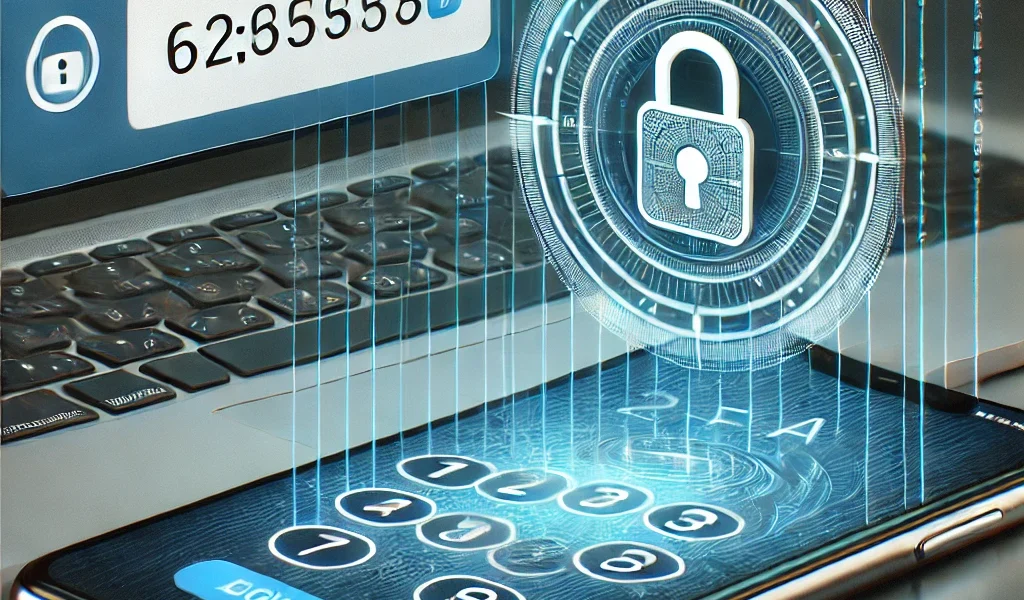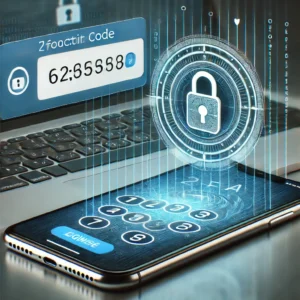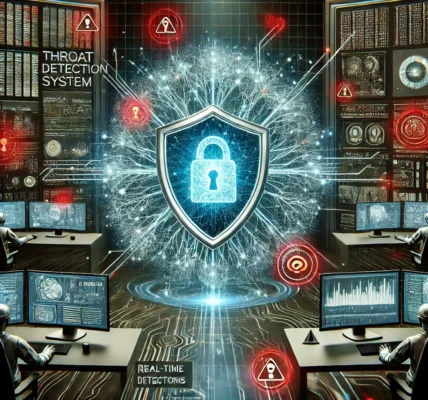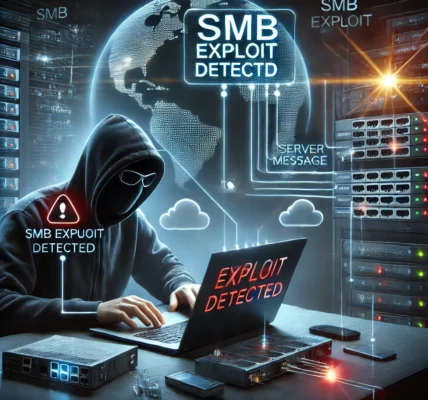Multi-factor authentication (MFA) is essential for protecting sensitive information in an online world where cyber threats are constant. Using MFA significantly enhances security by requiring additional verification beyond just a password. This extra layer helps prevent unauthorised access, which has become crucial for individuals and businesses alike.
Many organisations are adopting MFA solutions to safeguard their data. Rublon offers effective MFA options that cater to various needs, ensuring that users can access their accounts securely. By exploring their MFA solutions, readers can learn how to strengthen their security measures effectively.
As cyber attacks evolve, so too must the strategies used to combat them. MFA is a key component in recognising the importance of cybersecurity today. Understanding how to implement these solutions can lead to safer online experiences for everyone.
Understanding Multi-Factor Authentication
Multi-Factor Authentication (MFA) plays a crucial role in securing access to sensitive information. It adds extra layers of protection that go beyond just a password.
Importance of Multi-Factor Authentication
MFA significantly enhances security by requiring users to provide two or more verification factors. This method helps to safeguard user accounts against unauthorised access.
By combining something the user knows (a password) with something the user has (like a smartphone or hardware token), MFA reduces the risk of a security breach.
Cyber threats are becoming more sophisticated, making MFA a vital tool in protecting not only personal data but also organisational information.
Organisations that implement MFA can reduce the likelihood of data breaches and enhance consumer trust. This added security measure is often seen as a standard practice in today’s digital environment.
Key Components of MFA
MFA typically consists of three key components:
-
Knowledge Factors: This includes passwords or personal identification numbers (PINs). Users must remember these secret details.
-
Possession Factors: This refers to devices users own. This could be a mobile phone that receives SMS codes or a hardware token that generates a unique code.
-
Inherence Factors: These are biometric characteristics, such as fingerprints or facial recognition. They rely on physical traits of the user.
Using a combination of these factors makes it much harder for unauthorised individuals to gain access. Each factor adds a layer of security that compels attackers to have more than just a password.
Rublon MFA Solutions Overview
Rublon’s multi-factor authentication (MFA) solutions provide robust security features. They include easy-to-use tools that enhance safety for users and businesses alike.
Rublon Authenticator App
The Rublon Authenticator App is a key part of their MFA solutions. It offers a simple way for users to access secure services.
Users can generate time-based one-time passwords (TOTPs) to log in. This adds an extra layer of security to the authentication method. The app is compatible with various devices and works seamlessly across platforms.
With the Rublon Authenticator App, businesses can ensure that only authorised users gain access to sensitive information. The app also supports encryption to protect personal data.
This focus on user experience makes the app a strong choice for those looking to bolster security.
Mobile Push for Streamlined Authentication
Mobile Push is another feature in Rublon’s MFA toolkit. It simplifies the authentication process by sending notifications directly to a user’s device.
When a login attempt occurs, users receive a push notification. They can approve or deny the request with just one tap. This method is not only fast but also reduces the risk of phishing attacks.
Mobile Push enhances security while maintaining convenience. It allows users to remain in control of their access in real-time.
The system supports various devices and ensures quick, reliable communication. This contributes to a smoother user experience while safeguarding sensitive information.
Implementation and Integrations
Effective implementation and integration of multi-factor authentication (MFA) solutions are crucial for enhancing security. This process involves connecting the MFA system with various platforms and protocols to ensure a smooth user experience.
Seamless Integrations with Various Platforms
Rublon’s MFA solution offers easy integration with many platforms. It supports popular applications and services, allowing organisations to implement MFA quickly.
- Integration is available for web applications, cloud services, and other enterprise software.
- It uses APIs and SDKs that enable custom setups.
- Users can choose from various authentication methods, including SMS, email, or authenticator apps.
This versatility helps ensure that companies can adapt the MFA solution to their specific needs, increasing security without disrupting workflows.
Active Directory and LDAP Integration
Integrating with Active Directory (AD) and Lightweight Directory Access Protocol (LDAP) is essential for many businesses. Rublon’s MFA can link directly to these identity services.
-
Active Directory: This integration allows organisations to enforce MFA for users without changing their current login procedures. It helps protect sensitive data by requiring additional verification.
-
LDAP: Like AD, LDAP integration ensures that users accessing systems are authentic. This setup supports various applications that rely on LDAP for user management.
These integrations make it easier for companies to manage user access securely, maintaining a familiar environment for employees.
VPN and Remote Desktop Protocols
Rublon’s MFA also extends to Virtual Private Networks (VPNs) and Remote Desktop Protocols (RDP). Security for remote access is increasingly important today.
-
VPN Integration: Adding MFA to VPN access protects against unauthorised connections. Users can be required to verify their identity through a secondary method before accessing the network.
-
Remote Desktop Protocols: MFA enhances security for RDP sessions as well. Users must provide additional authentication to connect to remote systems. This is vital for safeguarding sensitive tasks and data.
Integrating MFA with these protocols ensures that remote access is secure, reducing the risk of data breaches.
User Experience and Accessibility
User experience and accessibility are key factors in using multi-factor authentication (MFA) solutions. Simple enrollment processes and ease of use across different devices are important for ensuring that users can adopt and benefit from these security measures.
Enrollment and User Onboarding
Enrollment in MFA systems should be straightforward. Clear instructions can help users understand what to do. Many solutions offer step-by-step guides, which reduce confusion.
Users often appreciate options for different verification methods, such as SMS or an authenticator app. This flexibility allows users to choose what works best for them.
A well-designed onboarding process can include tutorials that cover system features. Providing support through FAQs or chat options can improve user confidence during setup. Ensuring that these materials are easy to find is also crucial.
Ease of Use Across Devices
MFA solutions need to work seamlessly across various devices. The mobile app experience should be intuitive, allowing users to verify their identity quickly. This is especially important for those who rely on smartphones.
Moreover, compatibility with WebAuthn standards can enhance ease of use. Users should be able to access their accounts from multiple platforms without difficulty.
A good MFA solution will provide consistent experiences on both desktop and mobile. This way, users do not face frustration when switching devices. Clear visual cues and minimal steps in the authentication process help streamline access, making user interaction smoother.
Security Features and Policies
This section highlights important aspects of security features and policies offered by Rublon. It covers customisable security policies, advanced configuration options, and the ability to restrict access based on IP ranges.
Customisable Security Policies
Rublon allows users to create custom security policies tailored to their needs. Organisations can choose authentication methods that fit their risk levels. This flexibility helps enhance cybersecurity without being overly restrictive.
Users can implement various factors, such as passwords, biometric checks, or security tokens. This ensure that access is controlled and monitored effectively. Policies can be applied to different user groups, delivering a personalised security experience.
Additionally, organisations can set rules for specific activities, like logging in from untrusted devices. This detailed approach helps manage access while keeping systems secure. The ability to adapt policies ensures they meet changing security needs.
Advanced Configuration Options
Advanced configuration options provide further control over security measures. Administrators can fine-tune settings to suit their environment. This includes choosing specific authentication methods for certain applications or user groups.
Rublon supports a range of authentication methods, from SMS codes to push notifications. Users can select the method that best balances security and convenience. This adaptability helps organisations maintain a strong defence against cyber threats.
There are also options for integrating with existing systems, making implementation smoother. Advanced settings allow administrators to manage sessions and track user activity. This level of detail aids in monitoring compliance and identifying potential security issues.
IP Range Restrictions
Rublon enables the use of IP range restrictions as a security feature. Administrators can define which IP addresses are permitted to access their systems. This helps reduce the risk of unauthorised access.
By limiting access to known IP ranges, organisations can closely monitor connections. They can enforce stricter controls for remote workers or those using public networks. This added layer of security further safeguards sensitive information.
Organisations can also create exceptions for specific locations or trusted partners. This ensures that essential users retain access. With clear IP policies, teams can manage cybersecurity efficiently while allowing necessary connections.
Rublon Administration and Support
Rublon provides a comprehensive administration system and dedicated support options for users. This ensures that management and technical challenges can be addressed efficiently and effectively.
The Rublon Admin Console
The Rublon Admin Console is a central hub for managing multi-factor authentication settings. Administrators can easily configure security levels and access permissions. The console is designed for user-friendliness, allowing quick adjustments to settings.
Key features of the Admin Console include:
- User Management: Administrators can add, remove, or edit user accounts.
- Reports and Analytics: Detailed logs help track authentication attempts and user actions.
- Settings Customisation: Administrators can modify authentication methods to best fit their organisation’s needs.
This console streamlines the management process and enhances the security of accounts.
Dedicated Tech Support
Rublon offers dedicated tech support for all users. This service is designed to provide timely help with technical issues. Support agents are trained to assist with any challenges related to the Rublon system.
Users can access support through multiple channels:
- Email Support: For less urgent inquiries, users can email the support team.
- Live Chat: Immediate help is available through live chat during business hours.
- Knowledge Base: An extensive library of articles and FAQs assists users in troubleshooting common issues.
This variety ensures that users have support available when they need it.
Bypass Options for Emergencies
Rublon includes bypass options for emergencies. These options help users access their accounts when they cannot complete the standard authentication process.
Key features of the bypass options are:
- Emergency Bypass Codes: Administrators can generate one-time codes for immediate access.
- Backup Authentication Methods: Users can set up alternative methods for verification, such as security questions or backup emails.
- Restricted Access: Bypass options can be limited to ensure security remains intact during emergencies.
These features ensure that users can maintain access without compromising security protocols.
Authentication Methods and Tokens
This section discusses different ways to verify a user’s identity during the login process. Each method has its strengths and weaknesses, making it important to choose the right one for security needs.
SMS and Email Passcodes
SMS and email passcodes are common methods of two-factor authentication. Users receive a code through a text message or email link. They must enter this code after inputting their username and password.
The codes are usually time-sensitive, meaning they expire after a short period. This adds an extra layer of security. SMS is quick, but it can be vulnerable to interception. Email links may also be susceptible to phishing attacks.
Users should ensure they have access to their phone or email to receive these codes. It is advised to use them in combination with a strong password to enhance account security.
QR Codes and U2F Security
U2F security keys add another level of defence. These small devices connect to the computer via USB or NFC. When logging in, users insert the key or tap it against the device.
Both methods help to prevent unauthorised access because they require a physical item for authentication. Users should select U2F keys from trusted providers to maximise security.
Push Notifications for Prompt Verification
Push notifications are a modern and efficient method for authentication. When a user attempts to log in, an alert is sent to their registered device. The user can then approve or deny access with a single tap.
This approach is secure because it requires access to the user’s device. It reduces the chances of interception compared to SMS or email codes. Additionally, users receive instant alerts when someone tries to access their account.
To use push notifications effectively, users should keep their authentication apps up to date. Regular updates can help protect against security flaws. This method provides a fast and reliable way to verify identity at login.
Scaling and Reliability
A strong focus on scaling and reliability is essential for any authentication solution. Systems must remain effective under increasing demand while ensuring uninterrupted access to critical services.
High Availability for Critical Systems
High availability is vital for systems that require constant access. This means that the system is designed to remain operational, even during failures or maintenance.
Key features of high availability include:
- Redundancy: Multiple servers can take over if one fails.
- Load Balancing: Traffic is distributed evenly among servers.
- Regular Backups: Data is saved frequently to prevent loss.
These measures ensure users can access services whenever needed. With high availability, organisations can protect against downtime, which impacts productivity and user trust.
Scalable Solutions for Growing Businesses
As businesses expand, their authentication needs change. Scalable solutions adjust to increased user numbers without losing performance.
Key elements of scalability include:
- Flexible Infrastructure: The ability to add resources like servers or storage as needed.
- Adaptable Policy Management: Rules and settings that can grow with the business.
- User Management: Efficiently handles adding or removing users.
These aspects allow organisations to manage growth effectively. A scalable system supports both current and future demands, ensuring reliability as needs evolve.
Compliance and Industry Standards
Compliance with industry standards is crucial for businesses to protect sensitive information. Multi-factor authentication (MFA) solutions play an important role in helping organisations meet these requirements.
Meeting Regulatory Compliance Requirements
Many sectors need to follow strict regulations. These include the General Data Protection Regulation (GDPR) and the Payment Card Industry Data Security Standard (PCI DSS). MFA helps businesses comply with such regulations by adding another layer of security.
It requires users to provide additional forms of identity verification. This makes unauthorised access more difficult. Implementing MFA can demonstrate a commitment to protecting customer data. It also mitigates risks that can lead to costly penalties.
Adherence to Security Best Practices
Security best practices recommend using strong authentication methods. MFA is a key component of these practices. It is not enough to rely on just a password.
Using MFA with methods like one-time passwords (OTPs) and biometric scans significantly enhances security. Regularly updating these methods is also essential. This ensures that organisations stay ahead of potential threats.
Training staff on security measures can further strengthen protection. It is important for organisations to create a culture of security awareness. Using MFA supports the efforts to adhere to best practices in information security.
Advanced Connectivity Options
Advanced connectivity options enhance security and access for users across multiple platforms. This section looks at two important methods: connecting cloud applications and VPNs, as well as secure server and SSH access.
Connecting Cloud Apps and VPNs
Many businesses rely on cloud applications for their daily operations. Integrating these apps with Virtual Private Networks (VPNs) adds an extra layer of security.
When connected, VPNs encrypt data traffic, making it harder for outsiders to intercept information. This is crucial for sensitive data management.
Using Multi-Factor Authentication (MFA) further strengthens access control. By requiring multiple forms of verification, companies ensure that only authorised users can access cloud services.
In addition, organisations can implement policies to restrict access based on location or device. This fine-tuning allows for a more secure and efficient use of cloud resources.
Secure Server and SSH Access
Secure access to servers is vital for protecting sensitive information. SSH, or Secure Shell, is commonly used for secure server access.
SSH encrypts data between the client and server, making it difficult for hackers to read transmitted data. It provides a secure channel over an unsecured network.
Utilising MFA with SSH adds another verification layer. Users must provide a second form of identification along with their password.
This two-step process helps in safeguarding against unauthorized access. Additionally, administrators can set restrictions on SSH access based on user roles, enhancing security while allowing necessary flexibility.
Streamlining User Authentication
Streamlining user authentication enhances security and improves the user experience. Key methods include Single Sign-On (SSO) and effective email notifications.
Single Sign-On for Simplified Access
Single Sign-On (SSO) allows users to log in once and gain access to multiple applications without repeated credentials input. This process reduces password fatigue, which can lead to weak password choices.
With SSO, organisations can implement robust security measures while making it easier for users. They can access essential tools quickly.
SSO also streamlines IT management. It minimizes the number of passwords to support, reducing costs associated with password resets.
Email Notifications and Alerts
Email notifications play a crucial role in user authentication. They inform users of important actions taken on their accounts, such as logins from new devices or password changes.
These alerts help users stay aware of any potentially unauthorised access.
Regular notifications can also remind users to update their passwords, improving overall security.
Additionally, organisations can customise notifications based on user preferences. This approach ensures users are engaged and aware, fostering a stronger security culture.
Using email notifications effectively reinforces the importance of secure authentication practices.
Frequently Asked Questions
This section covers key questions about multi-factor authentication (MFA) and how to manage it effectively. Readers will find straightforward answers to enabling, resetting, and retrieving codes related to MFA.
How do I enable multi-factor authentication for my account?
To enable multi-factor authentication, log into your account settings. Look for the security or privacy section. Follow the prompts to set it up, usually by selecting a preferred method such as an app or SMS.
What steps should I follow to reset my multi-factor authentication?
To reset MFA, access your account settings. Find the multi-factor authentication option and select the reset option. You may need to verify your identity through email or text before making changes.
Where can I locate my verification code for multi-factor authentication?
The verification code can be found in the authentication app or sent via SMS. Users should ensure their phone number is linked to the account or have the authentication app installed to receive codes.
Can multi-factor authentication be temporarily disabled, and if so, how?
Yes, MFA can be temporarily disabled. Users can do this through their account’s security settings. They may need to provide a reason and verify their identity to turn it off.
What are the different methods available for multi-factor authentication?
Various methods for MFA include authentication apps, SMS codes, email verification, or hardware tokens. Users can choose one or more of these options depending on their preference and security needs.
How can I retrieve access to my account if I’m locked out due to multi-factor authentication issues?
If locked out, users should look for the account recovery option on the login page. This often involves answering security questions or receiving help via email. Following the instructions will lead to regaining access.
More information can be found here
Wiki information can be found here






